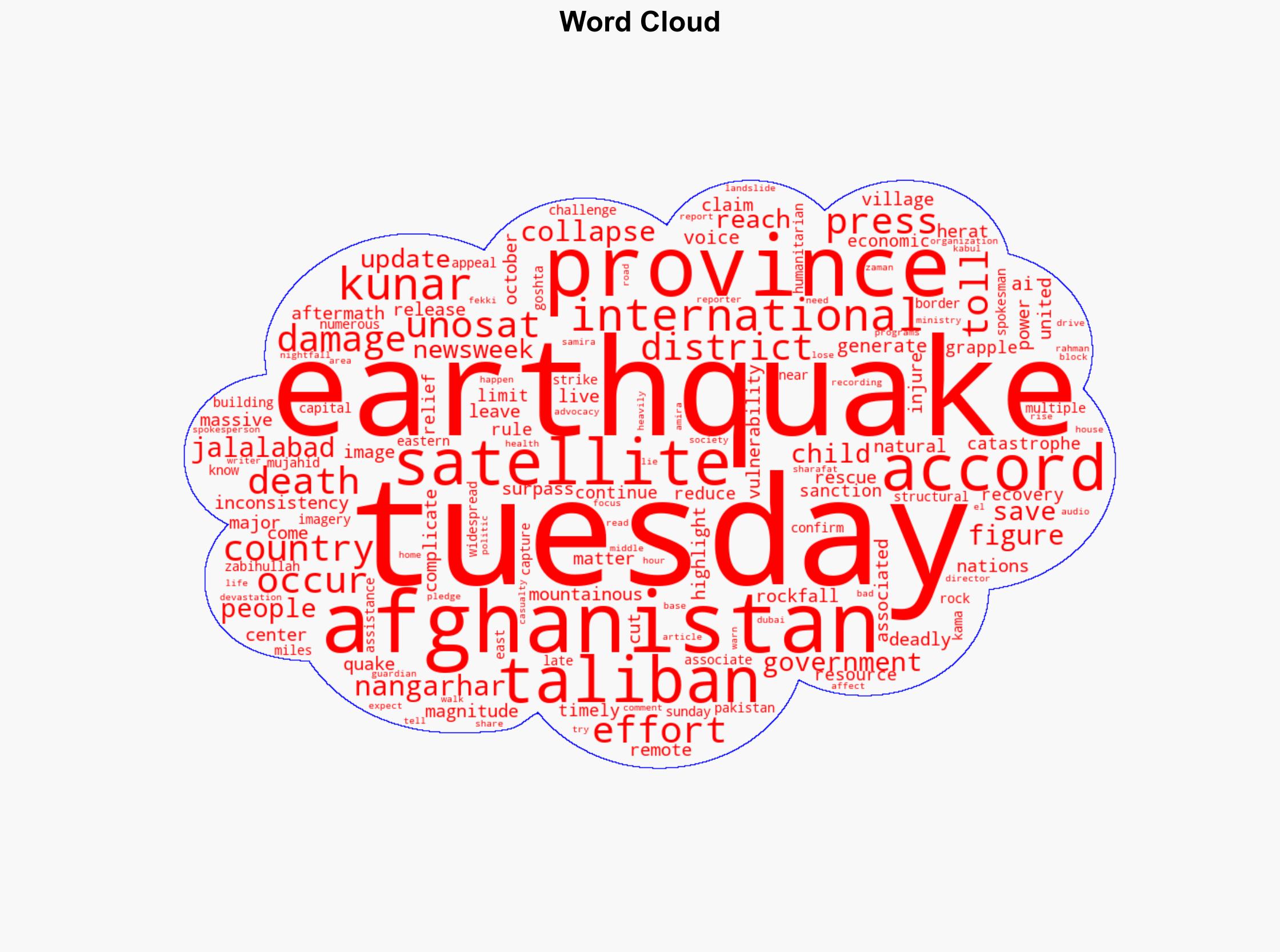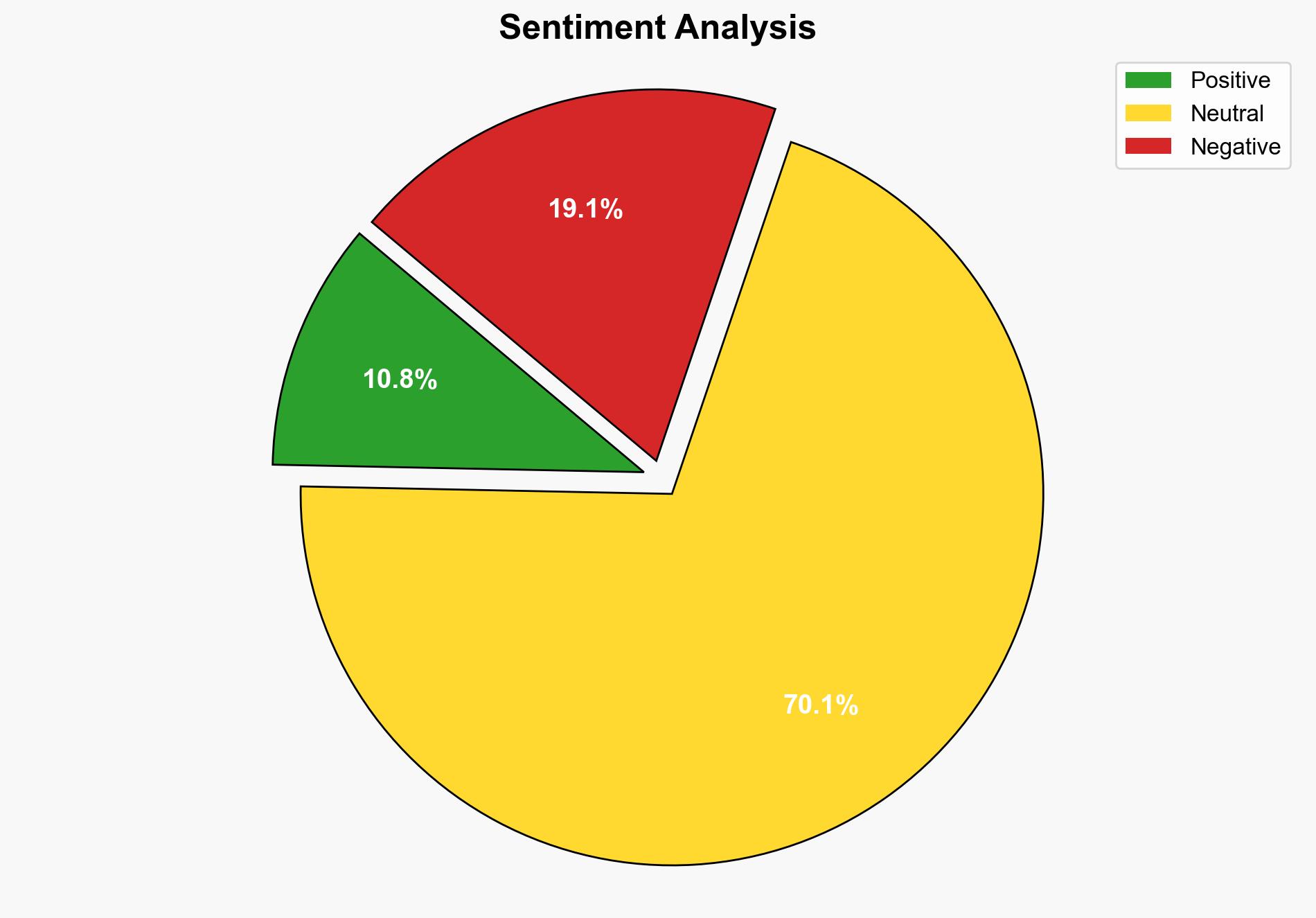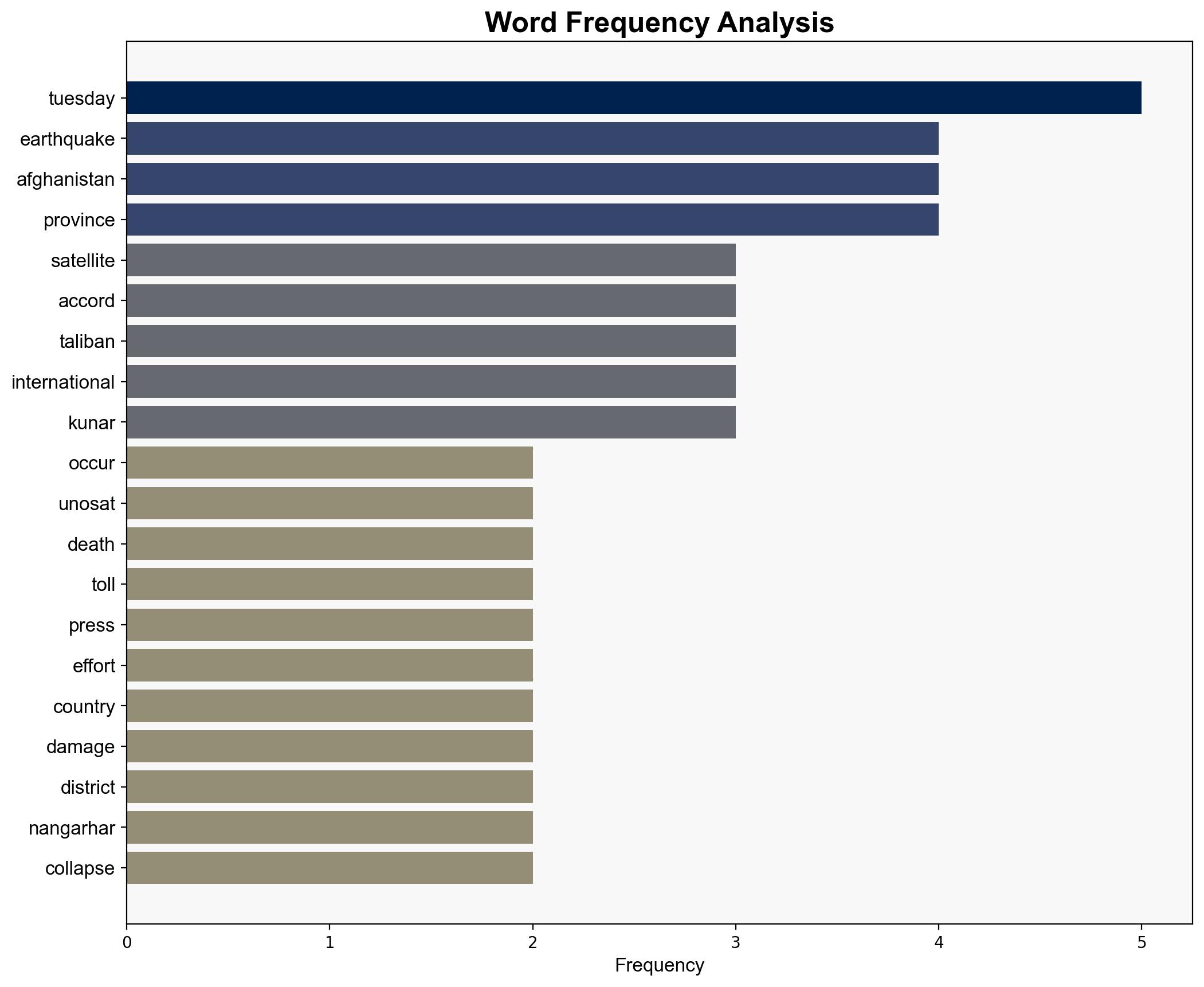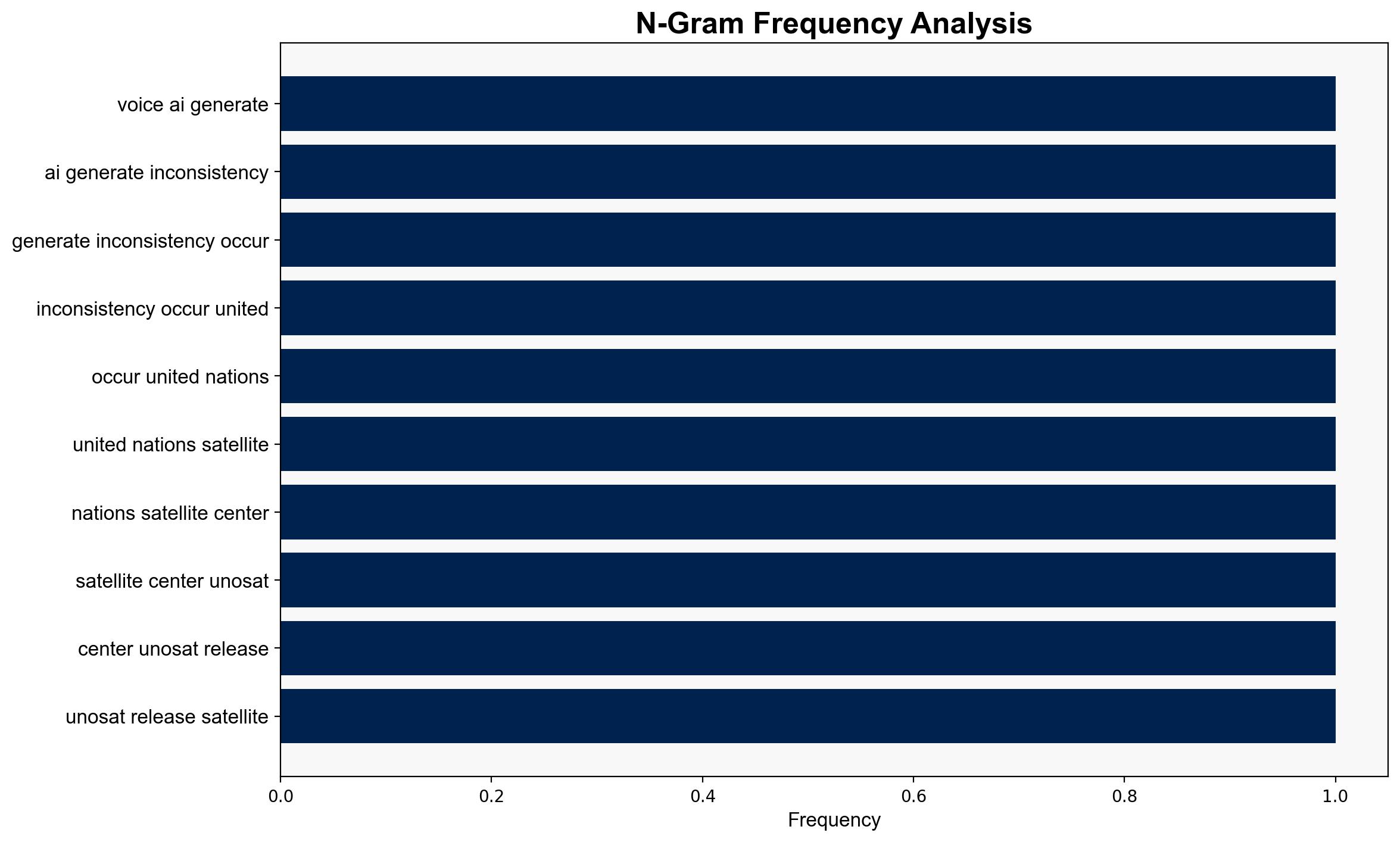Satellite Images Show Aftermath of Devastating Afghanistan Earthquake – Newsweek
Published on: 2025-09-03
Intelligence Report: Satellite Images Show Aftermath of Devastating Afghanistan Earthquake – Newsweek
1. BLUF (Bottom Line Up Front)
The most supported hypothesis is that the earthquake’s impact, exacerbated by Afghanistan’s current political and economic challenges, will significantly hinder recovery efforts, leading to prolonged humanitarian distress. Confidence level: High. Recommended action: Increase international humanitarian aid coordination to ensure timely relief and recovery.
2. Competing Hypotheses
Hypothesis 1: The earthquake’s devastation will lead to a severe humanitarian crisis due to the Taliban’s limited resources and international sanctions, resulting in inadequate response and prolonged suffering.
Hypothesis 2: Despite the challenges, the Taliban will manage to coordinate with international organizations to provide adequate relief, mitigating the crisis’s impact through effective resource allocation and local support.
Using ACH 2.0, Hypothesis 1 is better supported due to the current geopolitical isolation of Afghanistan and historical challenges in mobilizing international aid under Taliban rule.
3. Key Assumptions and Red Flags
Assumptions include the Taliban’s willingness and ability to cooperate with international bodies, and the international community’s readiness to bypass political barriers for humanitarian aid. Red flags include potential underreporting of casualties and damage, and inconsistent data on aid pledges and delivery.
4. Implications and Strategic Risks
The earthquake could exacerbate existing vulnerabilities, leading to increased displacement and potential regional instability. Economic sanctions may hinder recovery, while geopolitical tensions could limit international aid effectiveness. The psychological impact on the population could lead to increased anti-government sentiment and potential unrest.
5. Recommendations and Outlook
- Encourage international organizations to establish direct aid channels to bypass political barriers.
- Monitor Taliban’s response and adaptability to crisis management for future engagement strategies.
- Scenario Projections:
- Best Case: Effective international aid coordination leads to rapid recovery and stabilization.
- Worst Case: Prolonged crisis due to inadequate response, leading to regional instability.
- Most Likely: Slow recovery with intermittent international support, maintaining a fragile stability.
6. Key Individuals and Entities
Zabihullah Mujahid, spokesperson for the Taliban government; Samira Rahman, advocacy director for Save the Children Afghanistan; Sharafat Zaman, spokesperson for the Health Ministry in Kabul.
7. Thematic Tags
national security threats, humanitarian crisis, regional stability, international aid coordination




